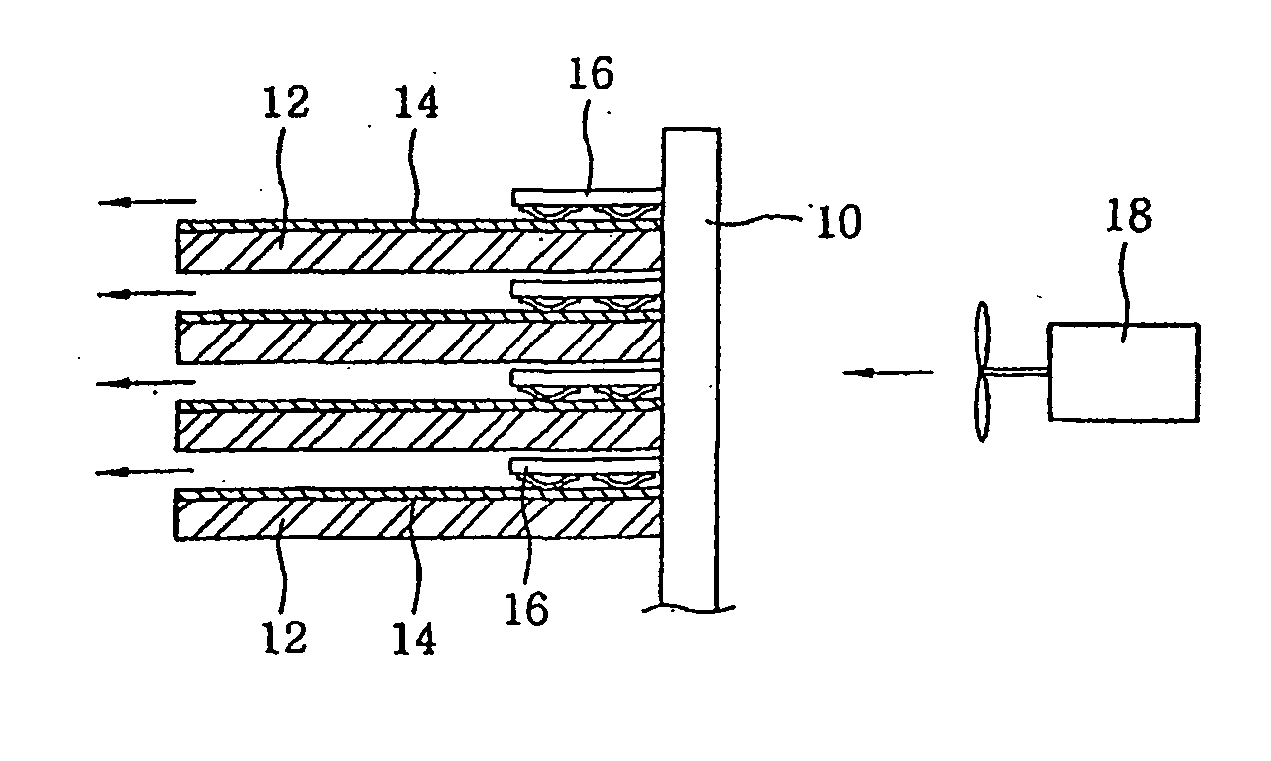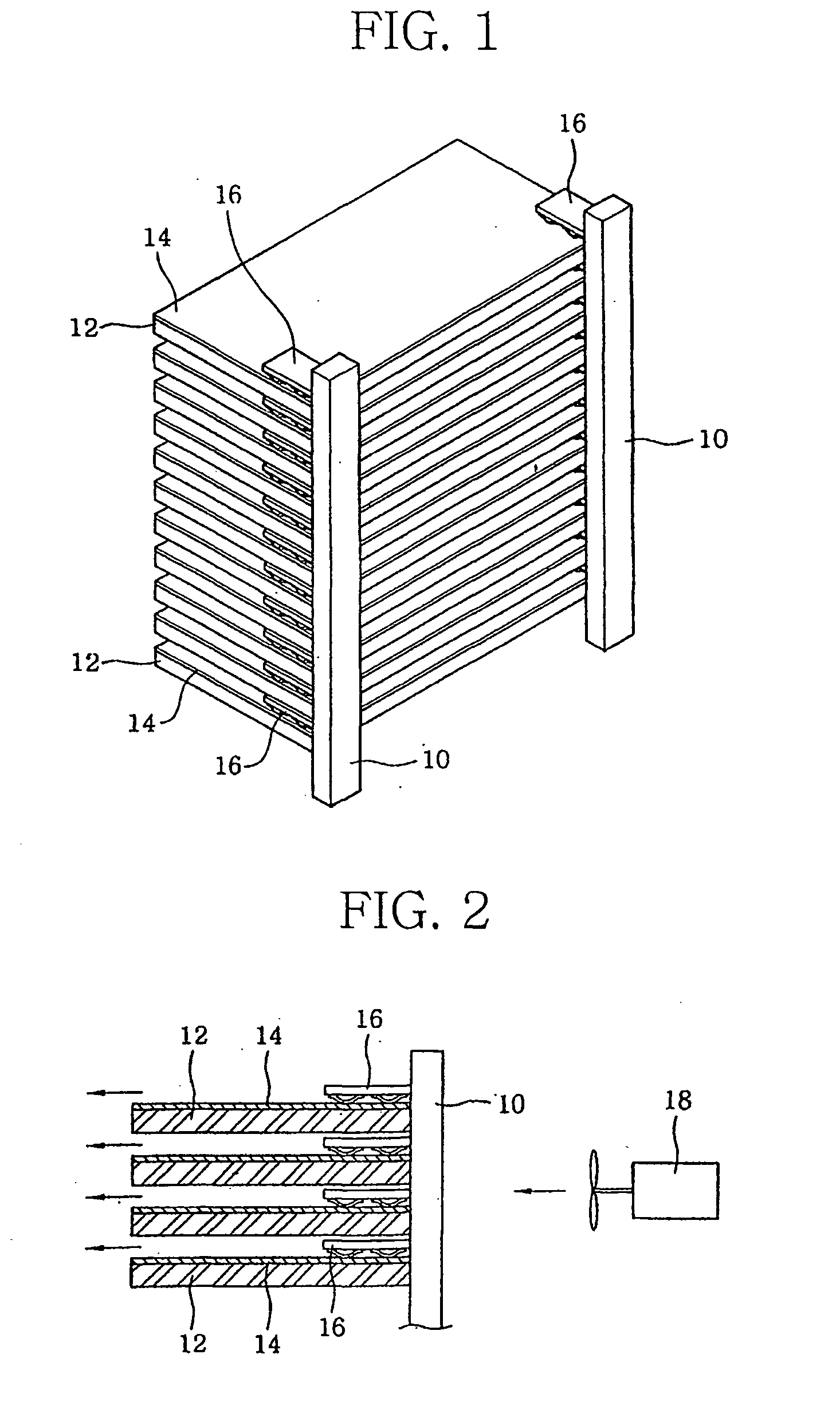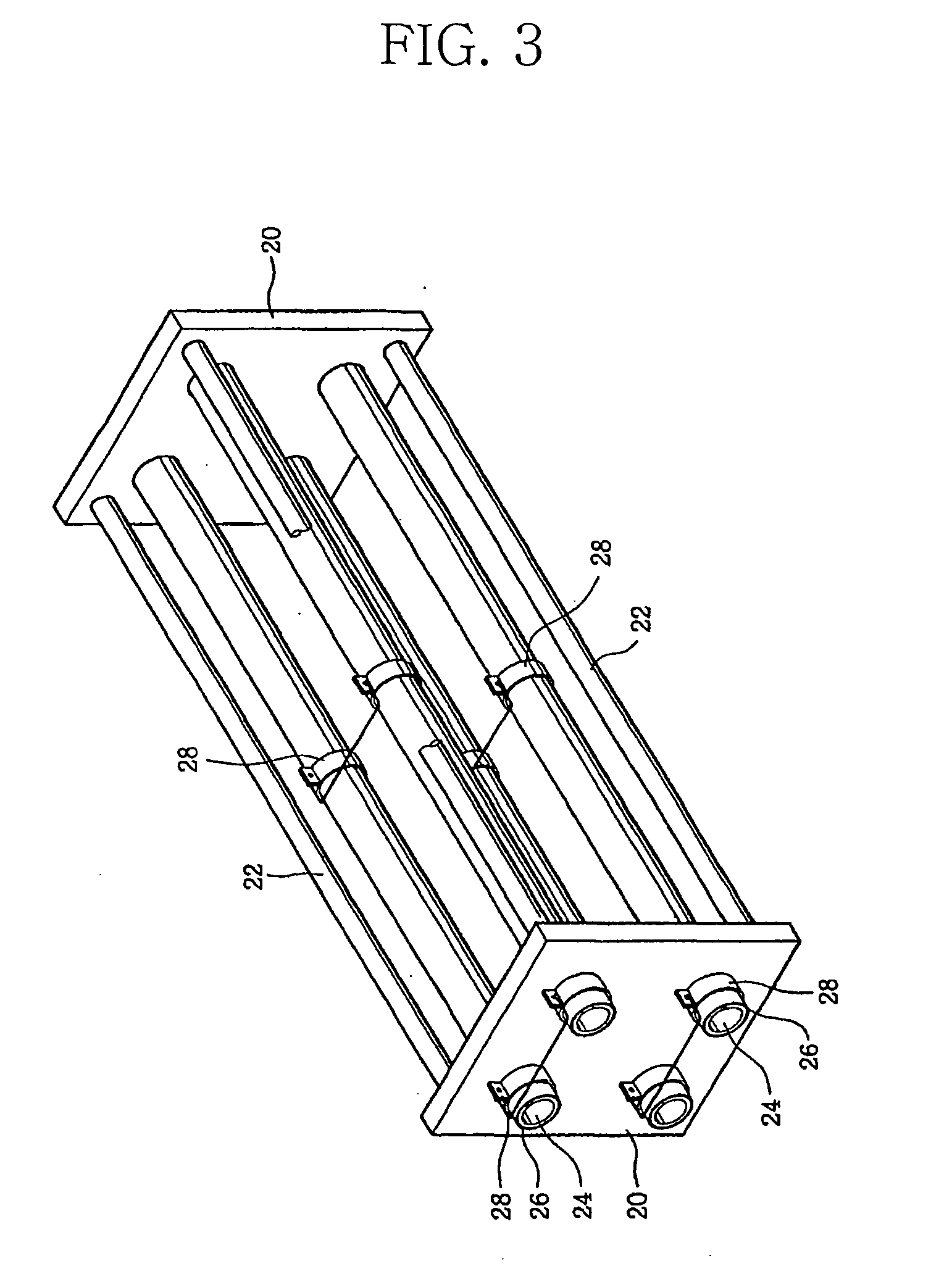Method for producing thin film heating element and heating device using same
a heating element and heating device technology, applied in the direction of heating elements, ohmic-resistance heating, printing, etc., can solve the problems of substrate damage in its external shape, inconvenient use of heating elements, and hindering the formation of thin films, etc., to reduce thermal stress, increase thermal resistance, and low thermal expansion property
- Summary
- Abstract
- Description
- Claims
- Application Information
AI Technical Summary
Benefits of technology
Problems solved by technology
Method used
Image
Examples
second embodiment
[0033] The heat generating portions 14, 26 of the heating devices of the first and second embodiment produced by the thin film heating element according to the present invention can generate heat of high temperature and have a excellent durability. Further, the heat generating portions can be easily formed into a desired shape and have very high thermal efficiency as compared with their power consumption. Although the substrates 12 and tubes 24 on which the heat generating portions 14, 24 are respectively formed are of flat or cylindrical shape in the illustrated embodiments, they may be formed into a circular, elliptical or other desired shape.
third embodiment
[0034] Referring finally to FIGS. 5 and 6, there is illustrated a heating device according to the present invention.
[0035] The heating device shown in FIGS. 5 and 6 comprises an inner container 40 which includes an upper inlet port 42 of a. slender tubular shape, through which liquid such as water can be easily introduced, and a lower drain port 44. An outer container 48 surrounding the inner container 40 is provided at an outer side of the inner container 40 so as to form a channel 46 through which the liquid discharged from the drain port 44 can flow, and an upper end of the outer container 48 is integrally formed with that of the inner container 40. An upper portion of the outer container 48 is formed with a drain port 50 which remains in communication with the channel 46. A connecting portion 52 which integrally connects the inner container 40 and the outer container 48 to reinforce their strength is formed at a lower portion of a space between the two containers.
[0036] In addit...
PUM
| Property | Measurement | Unit |
|---|---|---|
| temperature | aaaaa | aaaaa |
| temperature | aaaaa | aaaaa |
| thickness | aaaaa | aaaaa |
Abstract
Description
Claims
Application Information
 Login to View More
Login to View More - R&D
- Intellectual Property
- Life Sciences
- Materials
- Tech Scout
- Unparalleled Data Quality
- Higher Quality Content
- 60% Fewer Hallucinations
Browse by: Latest US Patents, China's latest patents, Technical Efficacy Thesaurus, Application Domain, Technology Topic, Popular Technical Reports.
© 2025 PatSnap. All rights reserved.Legal|Privacy policy|Modern Slavery Act Transparency Statement|Sitemap|About US| Contact US: help@patsnap.com



